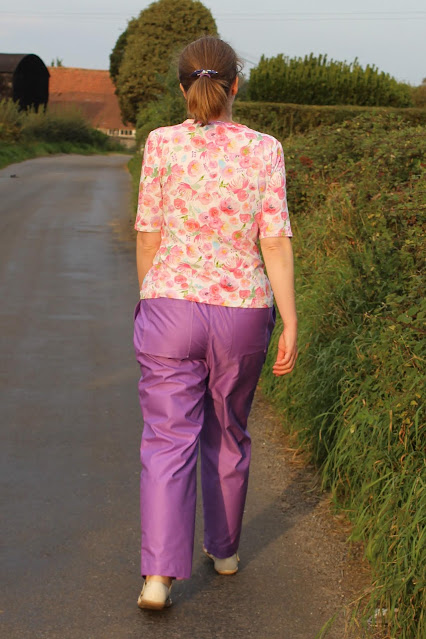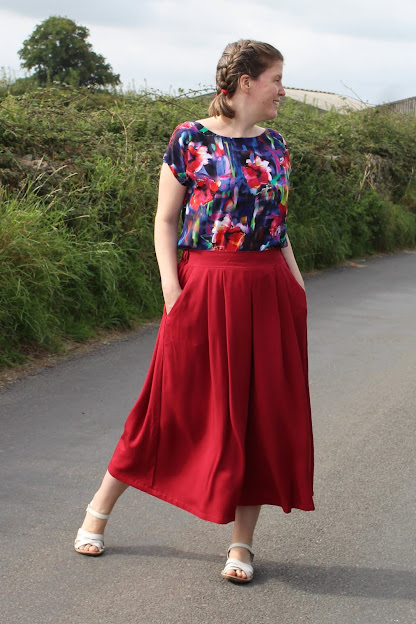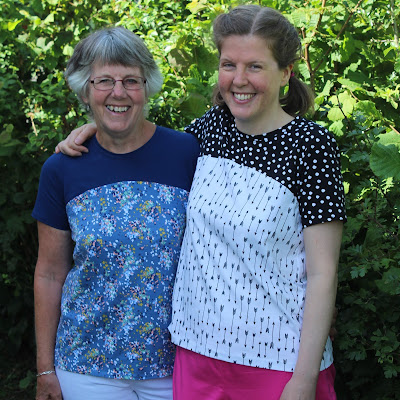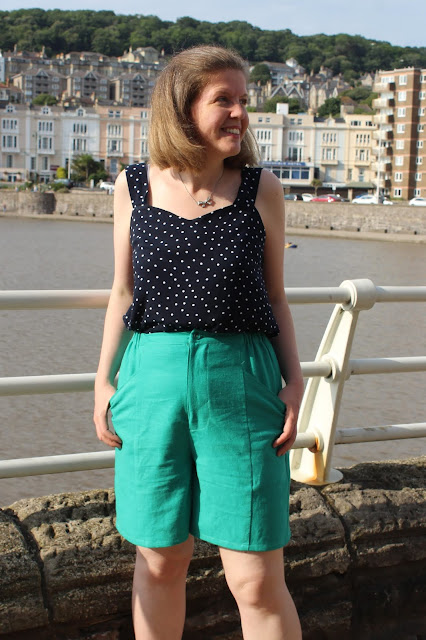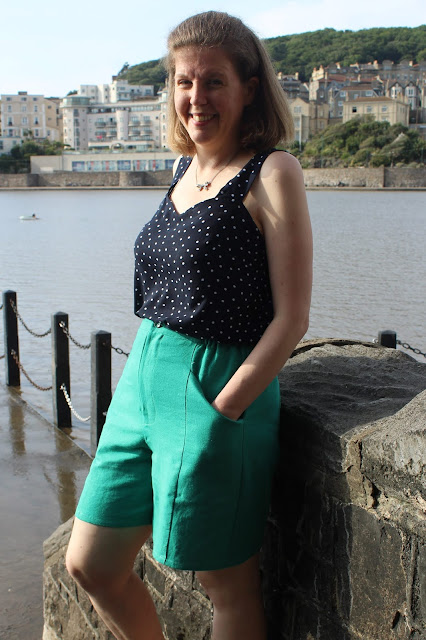Over the last few months I've been eyeing up various dungaree patterns and toying with the idea of making some for myself. I considered a range of options, but kept coming back to the Yanta overalls by Helen's Closet and eventually I decided that I just needed to give the pattern a go. Spoiler alert: I'm so glad that I did!
The Yanta overalls are a fairly popular pattern in the online sewing community but in case you haven't come across them before, they're a laid-back style with a relaxed fit. The straps are fastened to the front bib using buttons, they have a V-back, pointed front bib pocket, and front and back patch pockets. The pattern also has shorts or trouser views, and an optional side seam zip.
One of the things that eventually made me decide on the Yanta overalls was that I wanted the more relaxed fit of overalls-style dungarees, rather than the more fitted styles that are pretty much trousers with a bib attached (if that makes any sense?!). For me, this is definitely a project where comfort takes priority!
Sewing my Yanta overalls was a really enjoyable experience. The instructions are very thorough and help you to achieve a nice finish. I liked the fact that they include directions for topstitching most of the main seams, which I think helps to make the dungarees look more professional and will also make them more sturdy.
The only point where I deviated slightly from the instructions was when I was inserting the invisible zip. There's nothing wrong with the instructions - they have you sew the seam and then insert the zip, whereas I've personally always achieved better results with invisible zips when I insert the zip before sewing the rest of the seam so that's what I did here too.
In terms of sizing, I went a bit rogue to get the fit that I personally wanted. My measurements (B 38", W 32", H 42") put me in a 12 bust, and 14 waist/hips. While I did want a relaxed fit, I didn't want the fit to be quite as loose as intended at the waist (I thought that might get draughty!), so I blended between sizes and made a 12 at the bust, blending in to a 10 at the waist and back out to a 14 at the hip. That meant I definitely needed to add the optional zip (you might not need it if making a straight size), but that doesn't bother me at all.
Other than that, the only changes I made were to lengthen the section between the waist and the crotch by an inch and to lengthen the legs by 2 inches. I also lengthened the straps by about an inch. Lengthening patterns is standard for me (I'm 5'9"), and also the pattern intends the trouser length to be slightly cropped, but I wanted them to be full length.
The fabric that I used is an 8oz washed denim from Threadquarters (unfortunately now it looks like it's sold out apart from a remnant). It's a lovely quality fabric and exactly what I wanted for these dungarees - enough weight to make them appropriate for autumn/winter, but without being at all stiff. I also intentionally chose to use a dark blue denim because the colour will go with just about any top in my wardrobe so I'll have lots of outfit options.
While I wanted the outside of the dungarees to be neutral and practical, I decided to give myself pretty insides and used a contrast daisy print cotton for the facings (partly for aesthetic reasons and partly to reduce bulk) and added a lovely colourful Pink Coat Club label (also now sold out - sorry! But Joy has lots of other great designs).
I also couldn't stop myself from adding a bit of colour on the outside. I wasn't sure what buttons I wanted when I went shopping (thankfully I got that in before the new lockdown in England started), but then I found these unusual metal buttons with an elongated slot style hole rather than the usual small round ones, and I decided they'd look good if I attached them using a rainbow of thread. I slightly regretted that decision when it came to sewing them on and I realised I'd be effectively be doing the same amount of sewing as if I was using 12 buttons rather than 2 (6 threads each on both buttons), but I think it was worth it for the effect.
I was pretty pleased with my Yanta Overalls when I finished them, but now that I've worn them, I love them! As you can tell by the fact that I only finished them a couple of days ago and I've already worn them twice. Like other Helen's Closet patterns that I've made, the pattern was great to sew too. I'm now wondering whether I need a second, more colourful version! What colour would you go for?





















